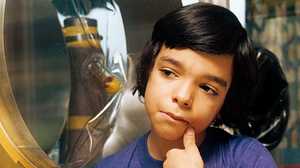David Vetter's Cognitive Development

Being kept in an isolator bubble for his health held risks for David Vetter's cognitive development. His doctors knew of a recent case involving German twins kept in isolators. Those boys exhibited evidence of retardation, although some symptoms went away after they were released from their bubbles. Many worried that the twins' mental abilities were adversely affected by their time in the bubble. David was watched carefully.
Early Motor Skills
David's earliest physical development was precocious. At four months he could push up on his hands and knees, lifting his abdomen from the floor. His mother, Carol Ann Vetter Demaret, remembers, "He was about six months old when he learned to crawl. I had left the room for a moment, and ... [w]hen I came back and didn't see him, I was frightened until I spotted him peeping out from behind a mound of supplies." By eight months he could sit himself up, stand by himself and even take a few steps. All of these physical milestones came two to three months earlier than the expected norm.
Late Language Skills
Meanwhile, language came slowly to David. He did not babble consistently as an infant and did not engage others through voice, gesture, or play. Karol Musher, a speech pathologist brought in to help David, described his abilities at age 13 months: "He did not seem to understand his name or the word no; did not look at objects or people ... when they were named; and did not follow simple commands. ... His oral language expression was virtually nonexistent and he did not use gestures to communicate." The reason for this situation, Musher surmised, was the large number of people that David came in contact with daily, and the inconsistency of their speech. To correct the problem, the hospital trained its staff in language development. Musher explained: They "began to verbalize all activities they performed in his presence and to label or describe things they were using... as a mother does, saying...'here's the spoon' or 'let's wipe it off.'"
Highly Intelligent
Just months after they implemented this new program, David could identify objects when their names were spoken and began babbling and using his hands to communicate. By the time he was two years old he was communicating appropriately for his age, although as his doctors wrote in a medical journal, his vocabulary was significantly different from most two year olds: "How many toddlers, after all, have occasion to use words like 'isolator' and 'transfer'?" At three, David was judged to be two years ahead of his peers and his IQ was measured at 126.
Formal Schooling
In terms of formal teaching, David began with a tutor twice a week at his home. By the second grade, a speakerphone had been connected with a classroom at Lamar Elementary (and later Wilkerson Intermediate) and David was able to participate in discussions and even compete in spelling bees. Although the teachers gave David A's, he presented a problem for them by showing no effort in his work. While they asked "what are we going to do with him," he asked, "why do I need to go to school?"
Spatial Perception Problems
The greatest difficulty in David's cognitive development involved his visual perception. Having spent all of his life in enclosed spaces looking out windows, David could not fully imagine space in three dimensions. Mary Ada Murphy, a psychologist who spent a lot of time with David, remembers one of his excursions in a specially designed space suit. David was familiar only with the view out the front windows of his house and when he wanted to go to the backyard, he walked across the street, away from his home looking for it. After he was encouraged to try walking around the house, he commented, "Gee, Mary, you're right, the house is a box, and the backyard is where you said it was."
Limited Views
Other visual problems stemmed from his limited perspective. "Nothing in the whole world is as big as the hospital parking lot," he said at age five. He did not understand that buildings in the distance were larger than they appeared. He also did not believe that buildings had back sides he could not see. Finally, at age six, he agreed that the medical clinic seen from his hospital window did have four sides, but insisted that there were windows only on the side facing him (as it happened, he was right).
Attuned to Abstraction
Although landscape paintings bored him, David enjoyed looking at abstract paintings. In fact, he once asked, "Why do you call those abstract? They are not abstract, they are real. This is a peaceful forest, and that one is ... the waves, the beach, the seashells."
TV Favorites
David liked television programs that were set in a single room, like sitcoms or soap operas. When watching a show like Little House on the Prairie, he needed someone to explain what happened when a horse went over a hill and out of sight. "Look up and watch," he'd say, "so you can tell me what's going on."
Covering Up Confusions
Being a smart, articulate boy, David was able to cover up many of his perceptual confusions before most people caught on to him. Murphy and her colleague Jacqueline Vogel wrote, "Few people were aware that David's percepts did not agree with objective reality. ... Having lost trust in his own perception, he needed to check out reality with us."
A Unique Boy
David's unique cognitive development -- his advanced motor skills, language acquisition, and his problems with perceptual comprehension -- seem to provide insight into how the human mind works. However, just as the German twins' retardation may have had as much to do with their parents' own mental condition, David's intelligence should not be attributed to his environment alone. David was a unique individual raised in extraordinary circumstances that will never again be duplicated.







